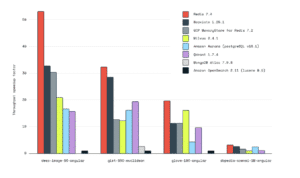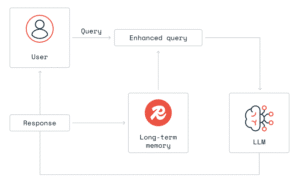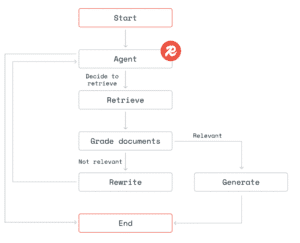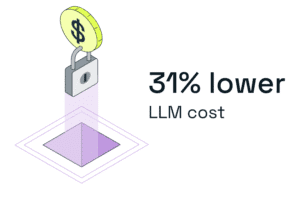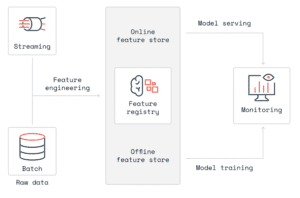Want to hire Redis developers?
Redis developers are specialized software engineers with deep expertise in Redis, an open-source, in-memory data store known for its speed and versatility. Unlike generalist developers, Redis developers focus on leveraging Redis’s advanced data structures—such as Strings, Lists, Sets, Hashes, and Sorted Sets—to build high-performance, scalable applications.
Proficiency in Redis’s architecture
Their proficiency in Redis’s architecture, persistence mechanisms (RDB and AOF), and replication sets them apart from developers working with traditional databases like SQL or NoSQL systems such as MongoDB. With 5+ years of experience, these professionals excel in optimizing data access and processing, making them critical for projects requiring low-latency and real-time capabilities.
The significance of Redis developers
The significance of Redis developers lies in their ability to harness Redis’s in-memory performance, which delivers microsecond-level data access compared to disk-based databases. They utilize Redis for tasks like caching, session management, real-time analytics, and message queues, integrating it seamlessly with tech stacks like Node.js, Python, Java, and cloud platforms such as AWS or GCP. For example, they implement Redis to cache frequently accessed data, reducing database load by up to 80%, or to power real-time leaderboards in gaming applications. Their expertise ensures efficient memory management, fault-tolerant clustering, and robust data pipelines, providing a competitive edge over developers less familiar with in-memory systems.
Benefits of working with Redis Developers
Hiring Redis developers offers distinct advantages for performance-critical projects. Their deep understanding of Redis’s command set and optimization techniques enables faster application response times and higher throughput compared to using general-purpose databases. They excel in projects like e-commerce platforms, where Redis powers product catalogs and session stores; real-time analytics dashboards for fintech or IoT applications; and messaging systems for chat or notification services. By tailoring Redis configurations to specific use cases, these developers deliver scalable, reliable solutions that reduce infrastructure costs and improve user experience, making them invaluable for businesses prioritizing speed and efficiency.
Redis Products
- Redis Cloud Fully managed and integrated with Google Cloud, Azure, and AWS.
- Redis Software Self-managed software with enterprise-grade compliance and reliability.
- Redis Open Source In-memory database for caching & streaming.
Redis features
- Active-Active Geo Distribution: 99.999% uptime and local sub-millisecond latency.
- Automatic failover: Seamlessly switch to a replica with no downtime if your primary server fails.
- Multiple modern data structures: 18 modern data structures, including vector sets, JSON, and more.
- Clustering: split data across multiple nodes to improve uptime.
- Data integration (CDC): Keep Redis updated with real-time changes from your system of record.
- Flexible deployment: Run Redis anywhere—cloud, on-prem, or hybrid. You’re in control.
TOP 10 Redis Related Technologies
- Python: Python is one of the most popular programming languages for Redis software development. Known for its simplicity and readability, it offers a wide range of libraries and frameworks that make Redis integration seamless. Its extensive community support and rich ecosystem make it an ideal choice for building robust and scalable Redis applications.
- Node.js: Node.js is a server-side JavaScript runtime that is commonly used in Redis software development. It provides a non-blocking, event-driven architecture, making it highly efficient for handling concurrent requests and real-time applications. With its lightweight and scalable nature, Node.js is well-suited for building high-performance Redis applications.
- Java: Java is a widely adopted programming language in the enterprise world, and it is no exception when it comes to Redis software development. With its strong emphasis on reliability, security, and scalability, Java offers a robust framework for building Redis-based applications. Its extensive libraries and tools make it a popular choice for developing enterprise-grade Redis solutions.
- Go: Go, also known as Golang, is a modern programming language that has gained popularity in recent years. It offers a powerful concurrency model and efficient memory management, making it a great choice for building high-performance Redis applications. Go’s simplicity and strong community support make it a preferred language for developers looking to leverage Redis in their projects.
- Ruby: Ruby is a dynamic, object-oriented programming language that is often used in Redis software development. It has a clean and elegant syntax, which makes it easy to read and write code. Ruby’s extensive libraries and frameworks, such as Ruby on Rails, provide developers with powerful tools for building Redis applications quickly and efficiently.
- PHP: PHP is a popular scripting language that is widely used for web development, including Redis integration. It offers a simple and intuitive syntax, making it easy for developers to build Redis-powered web applications. PHP’s large user base and extensive documentation make it a convenient choice for developers looking to work with Redis.
- C#: C# is a versatile programming language developed by Microsoft that is commonly used in Redis software development. It offers a wide range of features, including strong typing, garbage collection, and support for object-oriented programming. With its integration capabilities and extensive tooling support, C# is a reliable choice for building Redis applications on the Microsoft stack.
TOP 10 Facts about Redis
- Redis is an open-source, in-memory data structure store that can be used as a database, cache, and message broker.
- It was first released in 2009 and has since gained popularity due to its high performance, simplicity, and versatility.
- Redis supports a wide range of data structures including strings, hashes, lists, sets, sorted sets, bitmap, and hyperloglog.
- It is designed to be exceptionally fast, with the ability to handle millions of operations per second and sub-millisecond response times.
- Redis is often used as a caching layer in web applications to improve performance by storing frequently accessed data in memory.
- It provides built-in replication, allowing for data redundancy and high availability.
- Redis supports clustering, which allows for horizontal scaling by distributing data across multiple nodes.
- It has a rich set of features including pub/sub messaging, transactions, Lua scripting, and geospatial indexing.
- Redis can be easily integrated with various programming languages and frameworks through its extensive set of client libraries.
- It has a vibrant and active community, with regular releases and ongoing development to keep pace with evolving needs and technologies.
Redis for AI
Redis for AI is our integrated package of features and services designed to get your GenAI apps into production faster with the fastest vector database, robust integrations, and worldwide scale.
Improve RAG & search with the world’s fastest vector database
Get more accurate answers using retrieval-augmented generation (RAG), get the fastest responses on the market, and work with top ecosystem partners like LangChain and LlamaIndex.
Personalize AI responses with long-term memory
LLMs don’t retain recent history, which can cause awkward interactions. We store all previous interactions between an LLM and a user to deliver personalized GenAI experiences.
Short-term memory for faster AI agents
As GenAI systems get more complex, they use multiple agents, data retrievals, and LLM calls to complete tasks. Every step adds lag. We make agents faster, so you get higher-performing apps.
Reduce redundant LLM calls with semantic caching
Store the semantic meaning of frequent calls to LLMs so apps can answer commonly asked questions more quickly and lower LLM inference costs.
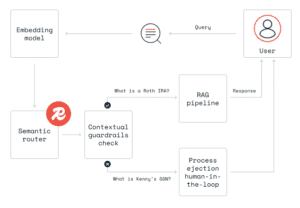
Choose the right tool with semantic routing
Route queries based on meaning to provide precise, intent-driven results for chatbots, knowledge bases, and agents. Semantic routing classifies requests across multiple tools to quickly find the most relevant answers.
Faster predictions with ML feature store
We store ML features for fast data retrieval to power timely predictions. Our feature store connects seamlessly with offline feature stores like Tecton and Feast at the scale companies need for instant decisions worldwide.
What are top Redis instruments and tools?
- RedisInsight: RedisInsight is a graphical user interface (GUI) tool for managing and monitoring Redis instances. It provides real-time metrics, performance analysis, and alerting capabilities. RedisInsight was developed by Redis Labs and was first released in 2019. It supports various Redis modules and is widely used by developers and administrators to optimize their Redis deployments.
- Redis Commander: Redis Commander is a web-based management tool for Redis. It allows users to interact with Redis databases through a user-friendly interface. Redis Commander was first released in 2013 and has gained popularity among developers due to its simplicity and ease of use.
- Redis Desktop Manager: Redis Desktop Manager is a cross-platform desktop application for managing Redis databases. It provides a graphical interface to perform various operations such as executing commands, managing keys, and monitoring server performance. Redis Desktop Manager has been actively maintained since its first release in 2010 and is widely used by developers and administrators.
- RediSearch: RediSearch is a full-text search engine built on top of Redis. It provides powerful indexing and querying capabilities, making it a popular choice for implementing search functionality in Redis-based applications. RediSearch was first released in 2017 and has gained traction in various domains, including e-commerce, content management, and analytics.
- Redis Sentinel: Redis Sentinel is a high-availability solution for Redis. It monitors Redis instances and automatically performs failover in case of master node failures. Redis Sentinel was introduced in Redis version 2.8 in 2014 and has since become a critical component in ensuring the reliability of Redis deployments.
- Redis Cluster: Redis Cluster is a distributed data store that allows horizontal scaling of Redis databases. It partitions data across multiple nodes and provides built-in fault tolerance and automatic data sharding. Redis Cluster was first introduced in Redis version 3.0 in 2015 and has been widely adopted for large-scale Redis deployments.
- Memtier Benchmark: Memtier Benchmark is a load generation tool specifically designed for benchmarking Redis. It simulates various workloads and measures the performance of Redis instances under different scenarios. Memtier Benchmark was originally developed by Redis Labs and has become a standard tool for Redis performance testing.
- RedisGears: RedisGears is a serverless engine for executing complex data processing tasks in Redis. It allows users to write custom functions and execute them directly within Redis, eliminating the need for external processing frameworks. RedisGears was introduced in 2019 and has gained attention for its ability to simplify and accelerate data processing pipelines.
- RedisTimeSeries: RedisTimeSeries is a time-series database module for Redis. It provides efficient storage and retrieval of time-series data, making it suitable for use cases such as IoT telemetry, monitoring, and financial data analysis. RedisTimeSeries was first released in 2019 and has been adopted by organizations seeking high-performance time-series data storage.
How and where is Redis used?
| Case name | Case Description |
|---|---|
| Real-Time Analytics | Redis is widely used for real-time analytics due to its high performance and low latency. It allows businesses to process and analyze large volumes of data in real-time, enabling them to make informed decisions and take immediate actions. For example, a retail company can use Redis to analyze customer behavior in real-time, such as tracking website clicks, monitoring social media interactions, and identifying trends. This helps the company optimize marketing campaigns, improve customer targeting, and ultimately increase sales. |
| Caching | Redis is commonly used as a caching solution to speed up applications and reduce database load. By storing frequently accessed data in Redis, applications can retrieve the data quickly without querying the database every time. This significantly improves the overall performance and scalability of the application. For instance, an e-commerce website can cache product information, user sessions, and other frequently accessed data in Redis. This allows the website to serve pages faster, enhance user experience, and handle higher traffic loads. |
| Message Queueing | Redis provides robust message queueing capabilities, making it an excellent choice for building distributed systems and handling asynchronous communication between microservices. It enables different components of an application to exchange messages and tasks efficiently. For example, a ride-sharing platform can use Redis as a message broker to handle ride requests, dispatch drivers, and notify users of ride status. This helps ensure reliable and real-time communication, enabling smooth and efficient operations. |
| Leaderboards and Rankings | Redis’s sorted sets feature makes it ideal for implementing leaderboards and rankings in gaming and competitive applications. It allows developers to store and update scores in real-time, perform ranking calculations, and retrieve top scores efficiently. For instance, a mobile gaming app can use Redis to maintain a leaderboard that displays the highest scores achieved by players. This enhances competitiveness, encourages engagement, and provides a dynamic and interactive gaming experience. |
| Session Management | Redis is often used for session management, especially in web applications that require fast and scalable session storage. It offers high-performance data structures and supports expiration and eviction policies, ensuring efficient handling of session data. For example, an online banking application can utilize Redis to store session information securely and handle authentication and authorization processes. This ensures seamless user experiences, enhances security, and enables horizontal scalability. |
How to Hire Redis Developer with Upstaff
Hiring skilled Redis developers for your project is streamlined with Upstaff’s efficient, client-focused process. Our platform connects you with pre-vetted professionals proficient in Redis’s in-memory data structures, caching, and real-time processing, ensuring your applications achieve high performance and scalability. Below is a step-by-step guide to hiring Redis developers through Upstaff, designed to match your technical and business needs within 48 hours.
Why Choose Upstaff for Redis Developers?
Upstaff’s platform accelerates hiring by connecting you with Redis experts who excel in performance-critical projects. Our developers’ deep knowledge of Redis’s data structures, persistence, and clustering, combined with experience in complementary technologies, ensures robust, scalable solutions. With a focus on cost-effective offshore talent from regions like Ukraine, we offer competitive rates—often 50% lower than local hires—without compromising quality. Whether you’re building a real-time analytics dashboard or optimizing an e-commerce platform, Upstaff delivers developers who drive measurable results.
Get Started Today
Ready to hire a Redis developer? Schedule a 30-minute discovery call with Upstaff to discuss your project needs. Find the right talent in 48 hours and start building high-performance applications. Contact us at [insert contact link] or visit upstaff.com to post your job now.
Talk to Our Expert







